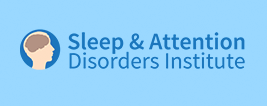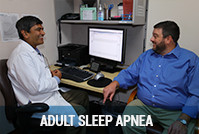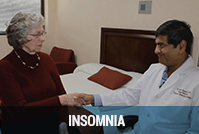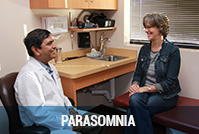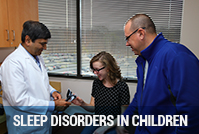Sleep & Attention Disorders Institute Offers Sleep Testing for Children and Adults in Michigan
If you snore, sleep poorly, have abnormal behavior in sleep, or are tired and sleepy during the day, you probably have a sleep disorder. It’s understandable if you are feeling concerned. When people are exhausted, they have trouble staying organized and paying attention. Sleep apnea can kill. Abnormal behavior in sleep can cause injuries. Sleepiness leads to accidents.
It all begins with sleep testing. During a sleep test, some sensors are placed on your body. This is completely painless! While you are sleeping, the sensors transmit information to diagnostic equipment. Sleep medicine expert Dr. R Bart Sangal, founder of the Sleep & Attention Disorders Institute in Sterling Heights, Mich., in the Greater Detroit area, uses the information to diagnose sleep disorders in children and adults.
Dr. Sangal is board certified in Sleep Medicine and in Clinical Neurophysiology. Patients come to him when they haven’t been able to find answers elsewhere. Dr. Sangal is passionate about his work and helping his patients feel better.
Do you live in Oakland and Macomb counties in Michigan, or anywhere in the Greater Detroit Metro Area? Contact the Sleep & Attention Disorders Institute for a consultation with Dr. Sangal. You have nothing to lose but sleepless nights. We are located where Sterling Heights, Troy, Rochester Hills and Shelby Township meet.
What Happens During a Sleep Test?
The first step to diagnosing a sleep disorder, such as sleep apnea or narcolepsy, is an evaluation by a board certified sleep medicine expert. The next step is to have a sleep test (called polysomnography or PSG). Accredited sleep centers offer quality testing. The Sleep & Attention Disorders Institute was first accredited by the American Academy of Sleep Medicine (AASM) in 1987. It is the oldest accredited sleep medicine facility in Oakland/Macomb counties in Michigan. Most sleep centers are not AASM accredited.
During a sleep test, sensors are attached to your face, scalp and other areas of your body. The sensors are connected to various pieces of diagnostic equipment. Dr. Sangal uses the information collected to understand what’s going on in your body when you are sleeping. These sensors can determine when you are actually asleep, which stage of sleep you are in, and for how long, throughout the test.
What Type of Information Is Collected During a Sleep Test?
- An EEG collects information on brain waves
- An EOG records eye activity
- An EMG tracks chin muscle movement
- Chest and abdomen belts record breathing effort.
- Sensors over the nose and mouth record airflow.
- A finger sensor records blood oxygen.
- Sensors on the legs record leg activity.
- Heartbeats are recorded by an ECG.
Each test provides Dr. Sangal with important details about your medical situation. If you stop breathing or have episodes of decreased breathing during the test, you may have sleep apnea. Different parasomnias have their own findings.
If Dr. Sangal believes you may be suffering from sleep apnea or parasomnia, he will likely recommend an overnight sleep test at the Sleep & Attention Disorders Institute. You will be asked to arrive early evening and will be able to leave when the testing is complete in the early morning hours. Taking this test will not interfere with a normal daytime work or school schedule. Patients arrive after dinnertime and leave before breakfast.
How Does a Sleep Test for Narcolepsy Differ from a Sleep Apnea Test?
If Dr. Sangal thinks you may have narcolepsy, be prepared to spend approximately 18 hours at the Institute. You will arrive in the early evening, similar to an overnight sleep test procedure. However, you will remain connected to the sensors throughout the following day. Dr. Sangal’s experienced, friendly staff will continue monitoring your sensor readings on the EEG, EOG, EMG and ECG. This is called an MSLT or multiple sleep latency test.
During the MSLT, patients lie down four or five times during the day to take a nap. Dr. Sangal wants to see how quickly you fall asleep. He also wants to know if you get into REM sleep and how fast that occurred. Narcolepsy patients go into REM sleep too quickly. Narcolepsy can be diagnosed during the MSLT.
The Sleep & Attention Disorders Institute: A Comfortable Place for Your Sleep Test
Some patients become nervous when they hear the words “sleep test.” However, after one consultation with Dr. Sangal, we know you will feel at ease. Dr. Sangal has worked with his team to make sure that the Sleep & Attention Disorders Institute in Sterling Heights, Mich., is a warm and caring place where patients feel comfortable.
This isn’t a hospital setting. The six private bedrooms are like hotel rooms and the beds are extremely comfortable. The mattresses and bedding are luxurious and inviting. Many people think about a night in a medical facility and recall bad experiences in noisy hospitals. Don’t worry about hearing noises in the hallways all night long. This is a quiet, peaceful environment where you will sleep.
Our technologists are wonderful. They are friendly and caring. If you need help during the night, a staff member will come to your bedside right away. If you need to use the restroom, they will do a quick disconnect of the sensors. When you return, they quickly reconnect you so you can get comfortable again.
Home Sleep Apnea Testing
If you are worried about having to come to the Sleep & Attention Disorders Institute in Sterling Heights, Mich. for your sleep test, ask us about home sleep apnea testing. Sometimes, a home sleep apnea test (HSAT) can give Dr. Sangal enough information to make a sound diagnosis of sleep apnea.
However, HSAT only records breathing. It does not record sleep patterns. The patient comes into the center in the evening and we teach you how to apply the device to yourself at home. You put it on and sleep through the night at home with the sensors attached. If any sensor moves or falls off for part or all of the night, there is no technologist to note this or fix it and the recording may be inconclusive. If you spend a significant amount of time awake that night, there is no way to know that, and the recording may be inconclusive. In the morning, you remove the sensors and bring the testing device back to the Institute.
Keep in mind that HSAT is only either positive for sleep apnea, or inconclusive. HSAT may confirm sleep apnea (although it is not very good about telling how severe the sleep apnea is). Otherwise it is inconclusive. When used properly on people with high likelihood of moderate to severe sleep apnea (who are unlikely to have other sleep disorders and do not have other medical disorders), it is inconclusive one-thirds of the time. Many insurance companies now insist on HSAT as a first step for almost all patients. HSAT is then inconclusive about one-half of the time. HSAT is not designed to exclude sleep apnea and there is no such thing as a negative HSAT. HSAT is not useful in the diagnosis of sleep disorders other than sleep apnea, such as parasomnia or narcolepsy.
Almost all insurance companies realize there is no such thing as a negative HSAT, and allow a sleep test in the sleep disorders center (polysomnography or PSG) if the HSAT is inconclusive. However, some insurance companies insist on two HSATs being inconclusive before allowing a PSG. So, if you are insured with one of those insurance companies, you may require three tests (two inconclusive HSATs and one PSG) to diagnose sleep apnea.
Dr. Sangal will read your test and discuss the results with you. Note: When used as required by most insurance companies, home sleep apnea tests are conclusive only about half the time. Home sleep apnea tests are not useful in the diagnosis of parasomnia or narcolepsy. They are only used for sleep apnea. Even for sleep apnea, positive tests can sometimes be wrong. There is no such thing as a negative HSAT for sleep apnea. If you have an inconclusive test result, it is crucial that you have the test done again overnight at the Sleep & Attention Disorders Institute.
Important Information for Sleep Testing Patients
For sleep apnea testing, take all medicines you normally take before the test.
For narcolepsy testing, some medicines can change the results. Talk to Dr. Sangal about the medicines you take.
Patients often worry they will not fall asleep in the center. We make it very comfortable. Patients always fall asleep. We only need a few hours of sleep to diagnose sleep apnea. Even if a patient does not sleep well, Dr. Sangal can still make a diagnosis.
Stop Lying Awake at Night Tossing & Turning; Contact the Sleep & Attention Disorders Institute Today and Set Up Your Sleep Test
Dr. Sangal is an experienced, compassionate sleep medicine doctor. He will talk to you about your concerns. He will diagnose your condition and prescribe treatment. We are convenient to Warren, Macomb Township, and Clinton Township. We are also convenient to Royal Oak, Pontiac and Bloomfield Township. Contact us today at 586-254-0707. Or fill out our convenient online contact form. We will call you to schedule your first consultation.
It’s Time to Find Out Once and for All; Schedule Your Sleep Test Today
